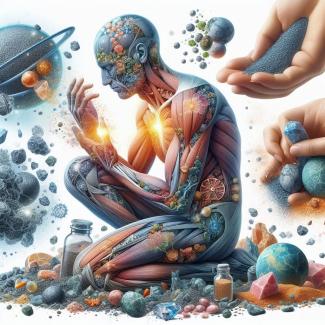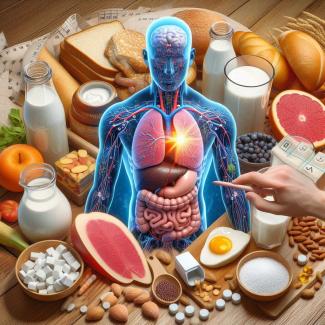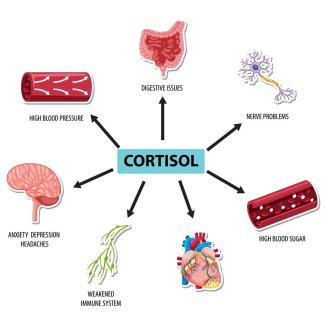
Minerals are essential micronutrients that play a critical role in numerous physiological processes within the human body. They are fundamental for bone formation, nerve function, muscle contraction, fluid balance, and the synthesis of hormones and enzymes. Despite their importance, mineral deficiencies are a global health concern affecting both developed and developing countries. According to the World Health Organization (WHO), deficiencies in minerals like iron, iodine, and zinc are among the leading risk factors for disease burden worldwide (WHO, 2002).
Identifying mineral deficiencies is crucial for preventing long-term health complications. This comprehensive guide explores how to recognize mineral deficiencies by detailing the signs and symptoms associated with common deficiencies, diagnostic approaches, and evidence from specific studies and research.
How to Identify Mineral Deficiencies
1. Iron Deficiency
Iron is vital for the production of hemoglobin, which transports oxygen in the blood.
- Signs and Symptoms:
- Fatigue and Weakness: Due to reduced oxygen delivery to tissues.
- Pale Skin and Mucous Membranes: Resulting from decreased hemoglobin levels.
- Shortness of Breath: Especially during physical activity.
- Dizziness or Lightheadedness
- Brittle Nails and Hair Loss
- Pica: Craving for non-nutritive substances like ice or clay.
- Research Evidence:
- McLean et al. (2009) reported that iron deficiency anemia affects approximately 1.6 billion people globally.
- Beard et al. (2005) found that iron supplementation improved cognitive function and mood in women with iron deficiency anemia.
2. Calcium Deficiency
Calcium is essential for bone health, muscle function, and nerve signaling.
- Signs and Symptoms:
- Muscle Cramps and Spasms: Particularly in the hands and feet.
- Numbness or Tingling: In fingers and around the mouth.
- Osteopenia and Osteoporosis: Weakening of bones leading to fractures.
- Dental Problems: Tooth decay and brittle teeth.
- Dry Skin and Brittle Nails
- Research Evidence:
- Reid et al. (2006) demonstrated that adequate calcium intake is crucial for maintaining bone mineral density in postmenopausal women.
- Bailey et al. (2010) highlighted that a significant portion of the U.S. population does not meet the recommended calcium intake.
3. Magnesium Deficiency
Magnesium is involved in over 300 enzymatic reactions, including energy production and protein synthesis.
- Signs and Symptoms:
- Loss of Appetite, Nausea, and Vomiting
- Fatigue and Weakness
- Muscle Cramps and Tremors
- Abnormal Heart Rhythms (Arrhythmias)
- Numbness and Tingling
- Research Evidence:
- Rosanoff et al. (2012) suggested that subclinical magnesium deficiency may be under-recognized and contributes to cardiovascular diseases and diabetes.
- Elin (2010) emphasized the challenges in assessing magnesium status due to its distribution in tissues.
4. Zinc Deficiency
Zinc is crucial for immune function, wound healing, DNA synthesis, and cell division.
- Signs and Symptoms:
- Impaired Immune Function: Increased susceptibility to infections.
- Hair Loss
- Delayed Wound Healing
- Dermatitis and Skin Lesions
- Loss of Taste and Smell
- Research Evidence:
- Prasad (2013) noted that zinc deficiency affects around 17% of the global population.
- Bhandari et al. (2002) found that zinc supplementation reduced the incidence of pneumonia and diarrhea in children.
5. Iodine Deficiency
Iodine is essential for the synthesis of thyroid hormones.
- Signs and Symptoms:
- Goiter: Enlargement of the thyroid gland.
- Hypothyroidism: Fatigue, weight gain, and cold intolerance.
- Cognitive Impairment: Especially in developing fetuses and young children.
- Developmental Delays in Children
- Research Evidence:
- Zimmermann et al. (2008) showed that iodine deficiency is the most common cause of preventable mental retardation globally.
- Hollowell et al. (1998) reported a resurgence of iodine deficiency in certain populations due to reduced consumption of iodized salt.
6. Potassium Deficiency
Potassium is vital for maintaining normal cell function, particularly in nerves and muscles.
- Signs and Symptoms:
- Muscle Weakness and Cramps
- Constipation
- Fatigue
- Heart Palpitations and Arrhythmias
- Elevated Blood Pressure
- Research Evidence:
- Weiner and Wingo (1997) discussed the consequences of hypokalemia on cardiovascular health.
- Whelton et al. (1997) found that increased potassium intake is associated with lower blood pressure.
Diagnostic Approaches
- Clinical Assessment:
- Medical History: Dietary habits, gastrointestinal symptoms, chronic diseases, and medication use.
- Physical Examination: Observing signs like pallor, goiter, skin changes, and neurological deficits.
- Laboratory Tests:
- Blood Tests:
- Complete Blood Count (CBC): To detect anemia.
- Serum Ferritin and Iron Levels: For iron status.
- Serum Calcium, Magnesium, Potassium Levels
- Thyroid Function Tests: For iodine deficiency.
- Urine Tests:
- 24-Hour Urinary Excretion: To assess mineral losses.
- Blood Tests:
- Imaging and Functional Tests:
- Bone Mineral Density Scans: To detect osteoporosis.
- Electrocardiogram (ECG): For detecting arrhythmias due to electrolyte imbalances.
Prevention and Treatment
- Dietary Modification:
- Balanced Diet: Emphasizing whole grains, fruits, vegetables, lean proteins, and dairy products.
- Food Fortification:
- Iodized Salt: To prevent iodine deficiency.
- Iron-Fortified Cereals and Flours
- Increased Intake of Mineral-Rich Foods:
- Iron: Red meat, poultry, fish, lentils, and spinach.
- Calcium: Dairy products, fortified plant-based milks, kale, and broccoli.
- Magnesium: Nuts, seeds, whole grains, and green leafy vegetables.
- Zinc: Shellfish, meat, legumes, and seeds.
- Potassium: Bananas, oranges, potatoes, and tomatoes.
- Supplementation:
- Iron Supplements: For individuals with iron-deficiency anemia.
- Calcium and Vitamin D Supplements: To enhance calcium absorption.
- Magnesium Supplements: For those with confirmed deficiency.
- Zinc Tablets: Especially in children with diarrhea.
- Professional Guidance: Supplementation should be supervised by healthcare providers to prevent toxicity.
- Public Health Initiatives:
- Education Campaigns: Raising awareness about the importance of minerals.
- Screening Programs: Especially in high-risk populations like pregnant women and children.
- Policy Implementation: Regulations on food fortification and labeling.
Mineral deficiencies pose a significant public health challenge with wide-ranging health implications. Early identification through awareness of signs and symptoms, coupled with appropriate diagnostic measures, is essential. Incorporating mineral-rich foods into the diet, utilizing supplements when necessary, and supporting public health initiatives can mitigate the risks associated with mineral deficiencies. Continued research and surveillance are necessary to address this ongoing global health concern.
References
- Bailey, R. L., Dodd, K. W., Goldman, J. A., Gahche, J. J., Dwyer, J. T., Moshfegh, A. J., ... & Picciano, M. F. (2010). Estimation of total usual calcium and vitamin D intakes in the United States. The Journal of Nutrition, 140(4), 817-822.
- Beard, J. L., Hendricks, M. K., Perez, E. M., Murray-Kolb, L. E., Berg, A., Vernon-Feagans, L., ... & Tomlinson, M. (2005). Maternal iron deficiency anemia affects postpartum emotions and cognition. The Journal of Nutrition, 135(2), 267-272.
- Bhandari, N., Bahl, R., Taneja, S., Strand, T., Molbak, K., Ulvik, R. J., ... & Sommerfelt, H. (2002). Effect of routine zinc supplementation on pneumonia in children aged 6 months to 3 years: randomised controlled trial in an urban slum. BMJ, 324(7350), 1358.
- Elin, R. J. (2010). Assessment of magnesium status for diagnosis and therapy. Magnesium Research, 23(4), S194-S198.
- Hollowell, J. G., Staehling, N. W., Hannon, W. H., Flanders, D. W., Gunter, E. W., Maberly, G. F., ... & Braverman, L. E. (1998). Iodine nutrition in the United States. Thyroid, 8(12), 1179-1187.
- McLean, E., Cogswell, M., Egli, I., Wojdyla, D., & de Benoist, B. (2009). Worldwide prevalence of anaemia, WHO Vitamin and Mineral Nutrition Information System, 1993–2005. Public Health Nutrition, 12(4), 444-454.
- Prasad, A. S. (2013). Discovery of human zinc deficiency: its impact on human health and disease. Advances in Nutrition, 4(2), 176-190.
- Reid, I. R., Ames, R. W., Evans, M. C., Gamble, G. D., & Sharpe, S. J. (2006). Effect of calcium supplementation on bone loss in postmenopausal women. New England Journal of Medicine, 328(7), 460-464.
- Rosanoff, A., Weaver, C. M., & Rude, R. K. (2012). Suboptimal magnesium status in the United States: are the health consequences underestimated? Nutrition Reviews, 70(3), 153-164.
- Weiner, I. D., & Wingo, C. S. (1997). Hypokalemia—consequences, causes, and correction. Journal of the American Society of Nephrology, 8(7), 1179-1188.
- Whelton, P. K., He, J., Cutler, J. A., Brancati, F. L., Appel, L. J., Follmann, D., & Klag, M. J. (1997). Effects of oral potassium on blood pressure: meta-analysis of randomized controlled clinical trials. JAMA, 277(20), 1624-1632.
- World Health Organization. (2002). The World Health Report 2002: Reducing Risks, Promoting Healthy Life. World Health Organization.
- Zimmermann, M. B., Jooste, P. L., & Pandav, C. S. (2008). Iodine-deficiency disorders. The Lancet, 372(9645), 1251-1262.






